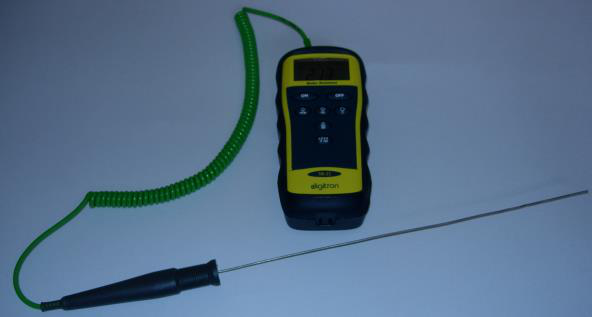Attach the insulation the bowl with the rubber bands supplied
The Equivalence between Work and Heat
1. Objective
To verify the equivalence between mechanical work and heat. To provide validation of the first law of thermodynamics.Figure 1. 240V Blender with beaker
1
3. Introduction
The first law of thermodynamics states that heat and work are equivalent forms of energy; work can be transformed into heat and vice versa. This simple experiment is designed to examine that principle. A hand held food blender will be used as a source of mechanical work input to a bowl and a beaker containing water. The electric power into the blender is measured directly with an energy meter. The measured temperature rise in the water gives an indication of how this work is transformed into heat energy. However, there will be an imbalance between the work and heat. This does not mean that the first law of thermodynamics is invalid, rather it forces us to examine where the work and heat actually go.In this experiment, there is no external source of heat applied to the system, Qin = 0 and no work is extracted from the system, Wout = 0, therefore:
Win - Qout = m C (T2 – T1) (3)
| T | =T | + | W in | − | Q | out | |
|---|---|---|---|---|---|---|---|
| 2 | 1 | m C | (4) | ||||
5. Experimental Procedure
2
- Connect power supply for the blender.
- One person operates the blender, the other takes readings of temperature, power and time – decide who does what.
6. Theoretical calculation for temperature T2
Using Equation (4), assuming no heat losses by letting Qout=0 (what can be caused by this assumprion?), calculate T2 and enter these values into Tables 1, 2, 3 and 4.7. Display of Results
Plot the experimentally measured and theoretical temperatures T2 against Win from the 4 experiments on the graph papers given. Use appropriate legends and labels for points, curves and axis.
|
|
|
|
||||||
|---|---|---|---|---|---|---|---|---|---|
4
Table 3.Experiment 3-Mechanical work to heat in the bowl (without insulation)
Volume of water =
|
|
|
|||||||
|---|---|---|---|---|---|---|---|---|---|
|
|||||||||
|
|||||||||
6
Bowl experiments: Temperature T2 (°C) against work Win (Joules)
2) Give a quantitative estimate of the percentage energy losses in converting electrical energy to heat energy to the water.
8
A1. Joule’s paddle wheel experiment
The paddle wheel experiment was conducted by James Joule in 1843, in which he let a weight of 890 pounds (404 kg) fall through a height of one foot (0.3048 m), which worked (turned) a paddle wheel in a tub of water, thus causing a raise in temperature of one degree in the water, as measured by a thermometer. The measured variables: mass, height, temperature gave one of the first accurate measured of the mechanical equivalent of heat. The results were described in his famous 1845 paper "On the Mechanical Equivalent of Heat", in which Joule determined a value A for the amount of work W required to produce a unit of heat Q.

